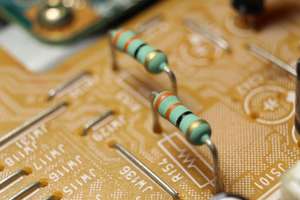
The Art of Thinking, and Safety
I want you to think about how it was like when you were a kid. Think of the first time somebody described icecream to you and how it actually was like when you finally had your first ice cream cone. You were excited to know about how the world works and this curiosity is what led to you getting a basic appreciation of how stuff works in the world. When people grow up, they lose this curiosity and eventually lose interest in learning new stuff.
Now we could have very many theories to explain why people lose their curiosity, but that won’t be of much use. What is important is that you spare a couple of minutes to think of how it felt to learn something new and show off your newly gained knowledge to your friends and how it felt to have a burning question that you would spend many days finding an answer to. That skill, curiosity, is of paramount importance in learning about technology.
The second thing you need to learn about technology is the art of thinking. Many of us are used to memorizing formulas and regurgitating facts. That doesn’t work when it comes to technology. In my field, electronics, it happens quite often that you create a project with a list of components required and for some strange reason, one component is always impossible to find. When you use a bit of thinking, you will be able to find a workaround and get your project up and running. To make you understand what I mean by this, think of how you used to approach puzzles. I once got a puzzle kit with 1001 pieces. I had to think where each piece had to go. How did I know where to put each piece? I would look at the color, the shape and used trial and error to see if each piece did fit into the positions I thought it was meant to fit into. I believe that having such skills is what you will need to become an everyday engineer.
Now that we’ve finished with the basics, let us move on to a few safety rules.
Safety
I would love for you to remain in one piece after going through the material on this blog. For you to do that you need to follow a very few, simple basic rules.
If in doubt, don’t. If you feel like experimenting with something you really feel is dangerous, then don’t. Instead, go on YouTube and find someone who already did the dangerous experiment for you (like Electroboom). There are tons of people out there who love dangerous stuff. Let them harm themselves not you.
Always turn the supply off before working on things. It is very tempting to try and open stuff while connected to the mains power supply or even when a battery is present. This is not an intelligent idea as you can damage components and also cause great harm to your body.
Water is not your friend. On this blog, we are going to deal with a lot of electronic devices. Electronic devices do not like water and neither should you. Avoid water like the plague. Only use it for bathing and drinking and avoid bringing water anywhere near your electronic devices.
If you can smell it, its probably burning. It is quite common to have your gadgets producing strange and unpleasant smells. This is usually an indication that something isn’t quite right. Maybe there is a component burning or maybe the plug is melting. Switch off such gadgets and perform a quick inspection. If you do not know how to do so then ask someone else who is qualified to inspect your device for you.
Hot things are hot. Don’t touch them or at least wear gloves that are suitable for handling such hot objects. This sounds obvious, but you won’t believe how many people accidentally burn themselves whilst doing projects.
Don’t open electrical devices to see their circuit boards if you don’t know what you’re doing. There are plenty of capacitors that store charge long after the device is disconnected from power. You really won’t like having current flowing through you. Besides you will void your warranty and the manufacturer will refuse to fix the device if you ever have a problem.
First Aid Kit. The worst comes to the worst. You cut yourself, burn yourself or do something nasty to yourself. That’s where the first aid kit comes in super handy. Keep one nearby.
Now that we’re done with the basics, let’s move on to the good stuff. In the next set of blog posts we will be dealing with Voltage, Current and give you useful information that you can use in your everyday life.





Comments